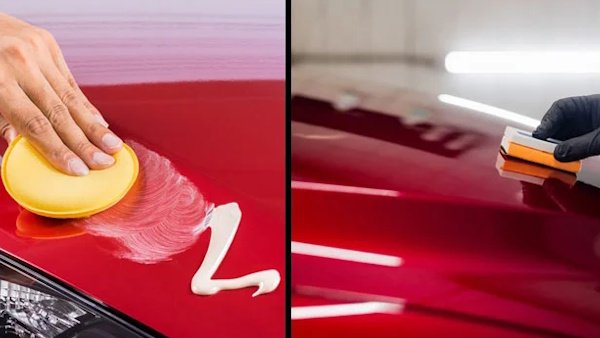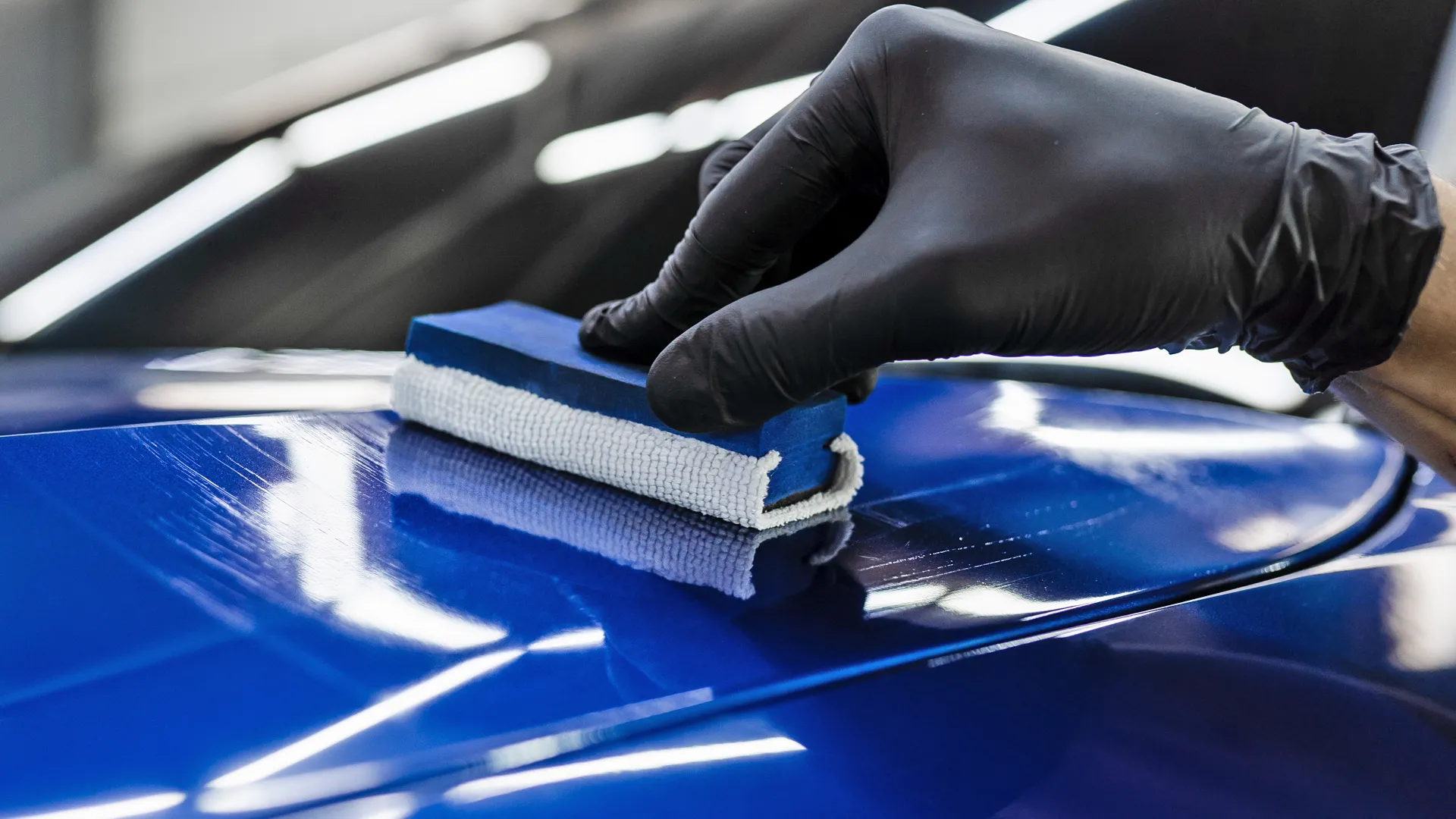Why Ceramic Coating Newark is a cost-effective investment for drivers in Newark
Checking out the Science Behind Car Ceramic Coating and Its Protective Characteristics
The scientific research of car ceramic coating offers a remarkable research study in advanced vehicle protection. Composed mainly of silicon dioxide and polymers, these finishes form a robust bond with automobile paint. This communication improves longevity against environmental dangers while supplying hydrophobic advantages. The details of exactly how these finishes work and their lasting advantages stay much less comprehended. Ceramic Coating Newark. Unloading these details reveals why ceramic coatings are becoming a favored selection for car care
What Is Ceramic Coating?
Ceramic coating is a fluid polymer that chemically bonds to the surface area of an automobile's paint. This advanced protective layer boosts sturdiness and offers remarkable resistance to ecological aspects. Unlike typical wax or sealants, which provide short-term defense, ceramic finishes create a durable guard that can withstand extreme conditions such as UV rays, acidic impurities, and severe weather condition. When applied correctly, the coating forms a hydrophobic surface, causing water to bead and slide off, which aids in preserving the automobile's tidiness. Furthermore, it uses boosted gloss and depth to the paint, making the car show up more sleek and vibrant. The application procedure typically involves complete surface prep work, including cleansing and polishing, to ensure peak bonding. As a result, ceramic coatings are coming to be increasingly preferred amongst car fanatics and those seeking to secure their financial investments, promising to keep the vehicle's aesthetic charm while minimizing the frequency of maintenance.
The Structure of Ceramic Coatings
The intricate formula of ceramic finishings largely includes silicon dioxide (SiO2), which is stemmed from all-natural sources like quartz and sand. This vital element provides the structure for the coating's toughness and safety top qualities. Along with SiO2, ceramic finishings frequently include different polymers and additives that enhance bond, versatility, and resistance to environmental variables. These compounds work synergistically to develop a robust barrier versus contaminants such as dust, chemicals, and UV rays.Furthermore, some solutions include titanium dioxide (TiO2) or other nanomaterials, which can increase the coating's hydrophobic residential or commercial properties, resulting in enhanced water repellency. The precise structure can differ greatly among manufacturers, influencing efficiency and long life. Eventually, the combination of these components finishes in a safety layer that not just enhances the visual charm of vehicles yet additionally serves to prolong their lifespan by securing the surface from potential damage.
Exactly How Ceramic Coatings Job
Recognizing just how ceramic finishes work entails exploring their chemical structure, which adds to their protective high qualities. The application process is vital for accomplishing ideal results, while longevity and longevity aspects identify the coating's performance gradually. Together, these aspects highlight the advantages and performance of ceramic coatings for automobile security.
Chemical Structure Explained
While numerous car proprietors look for resilient security for their vehicles, the chemical composition of ceramic finishings plays an important duty in their performance. These coverings primarily include silicon dioxide (SiO2), which is obtained from natural minerals. This substance forms a solid bond with the vehicle's paint, developing a long lasting, protective layer. Additionally, lots of ceramic finishings include titanium dioxide (TiO2), improving their hydrophobic buildings and resistance to UV rays. The presence of polysiloxanes can better improve adaptability and longevity. Together, these components add to the coating's capability to drive away water, dirt, and pollutants, while additionally giving a high-gloss coating. Recognizing this chemical foundation aids car owners appreciate the durable security supplied by ceramic coatings.
Application Refine Review
Applying ceramic coverings entails a careful process that assures perfect bonding and protection for the car's surface area. Comprehensive cleansing and purification of the car's outside are done to get rid of dirt, crud, and previous waxes. This action confirms that the surface area is devoid of impurities that might impede bond. Following this, the paint is typically polished to enhance clarity and get rid of any type of flaws. When prepared, the ceramic coating is used in tiny sections making use of an applicator pad, enabling uniform protection. The coating is then left to treat, creating a solid chemical bond with the surface area. Correct curing times and conditions are essential, as they confirm the coating attains its optimum effectiveness and protective qualities.
Durability and Toughness Aspects
Ceramic coatings are developed to offer resilient security through their sophisticated chemical structure, which creates a durable obstacle versus environmental contaminants. The resilience of these coverings is affected by factors such as the thickness of the application, the high quality of the item, and the conditions under which the automobile is revealed. Top quality ceramic coatings can last numerous years, standing up to scratches, UV rays, and chemical why not check here discolorations. Correct upkeep, consisting of normal cleaning and routine reapplication, can additionally enhance long life. In addition, environmental elements like climate and exposure to contaminants can impact the life expectancy of the coating. Generally, when used and maintained appropriately, ceramic finishes offer outstanding longevity, making them a prominent choice for car enthusiasts seeking to protect their car's appearance.
Hydrophobic Qualities and Water Repellency
Hydrophobic properties are a characteristic of quality car ceramic coatings, considerably enhancing the car's surface area performance. These layers create a molecular bond with the car's paint, resulting in a surface area that pushes back water successfully. When water enters call with a ceramic-coated surface, it grains up and rolls off, minimizing the amount of fluid that continues to be on the paint. This behavior not only contributes to an aesthetically pleasing appearance however additionally decreases the buildup of pollutants such as dust, crud, and roadway salts.The improved water repellency results in easier cleaning and maintenance, as less initiative is called for to get rid of undesirable substances. Furthermore, the hydrophobic nature of ceramic finishings helps in preventing water areas, which can mar the coating of uncoated surfaces. In general, the consolidation of hydrophobic properties in ceramic finishings plays a crucial duty in keeping the automobile's excellent appearance while streamlining upkeep.
Defense Versus Scratches and UV Damage
Car ceramic finishes offer significant defense versus scrapes and UV damages. The scratch resistance system develops a long lasting layer that soaks up effects, while the UV shielding benefits help keep the car's paint integrity with time. With each other, these features add to a longer-lasting and visually attractive surface.
Damage Resistance Device
Making use of innovative technology, ceramic finishes provide a robust guard versus scrapes and UV damage, boosting the long life and look of lorry surface areas. The scrape resistance mechanism of these coverings is credited to their unique molecular framework, which forms a resilient bond with the automobile's paint. This bond creates a hard, safety layer that can take in effects and resist abrasions. Furthermore, the smooth surface area of the coating decreases rubbing, making it difficult for contaminants to stick and trigger scratches. The chemical structure of ceramic finishes often includes nanoparticles that reinforce the protective layer, additional enhancing its durability. Consequently, automobiles treated with ceramic finishes show noticeably enhanced scratch resistance compared to traditional wax or sealers, guaranteeing an excellent coating in time.
UV Shielding Conveniences
The protective high qualities of ceramic finishings expand beyond scrape resistance to consist of significant UV protecting advantages. These finishings create a robust obstacle that reflects unsafe ultraviolet rays, securing the lorry's paint and underlying products. Prolonged exposure to UV radiation can lead to fading, oxidation, and damage of the paint finish. By integrating ceramic finishings, vehicle proprietors can efficiently alleviate these dangers, maintaining the visual appeal and honesty of their vehicles. Furthermore, the UV obstructing properties contribute to enhanced long life, minimizing the frequency of painting and upkeep. Ultimately, the assimilation of ceramic layers offers a thorough service for protecting vehicles from the damaging effects of sun exposure, making certain a sustained, dynamic appearance gradually.
The Long life and Upkeep of Ceramic Coatings

Frequently Asked Concerns
Can Porcelain Coating Be Applied to Any Kind Of Automobile?
Ceramic coating can be put on various kinds of vehicles, including cars and trucks, trucks, and motorbikes. Nonetheless, surface area prep work and compatibility with specific products why not try this out are necessary for perfect bond and efficiency of the coating.
Just How Much Does Ceramic Coating Normally Expense?
Ceramic coating typically sets you back between $500 and $2,000, relying on elements such as vehicle size, coating quality, and expert application. The investment can provide lasting security and enhance the lorry's appearance over time.

Is Professional Application Essential for Finest Outcomes?
The necessity of expert application typically depends upon preferred results. Professionals commonly assure correct surface area preparation and application techniques, bring about suitable bonding and long life of the coating, which may be testing for inexperienced people to achieve.
Can Porcelain Coatings Be Removed or Repaired?
Ceramic coatings can be eliminated or repaired, though the procedure may require certain solvents or methods - Ceramic Coating Newark. Correct removal is essential to prevent damage to the underlying surface, stressing the significance of expert support for ideal results
Just How Does Porcelain Coating Compare to Typical Wax?
The comparison in between ceramic coating and standard wax discloses that ceramic finishings offer superior sturdiness, boosted security against ecological contaminants, and longer-lasting sparkle, while wax calls for extra constant application and offers much less overall resistance to damage.